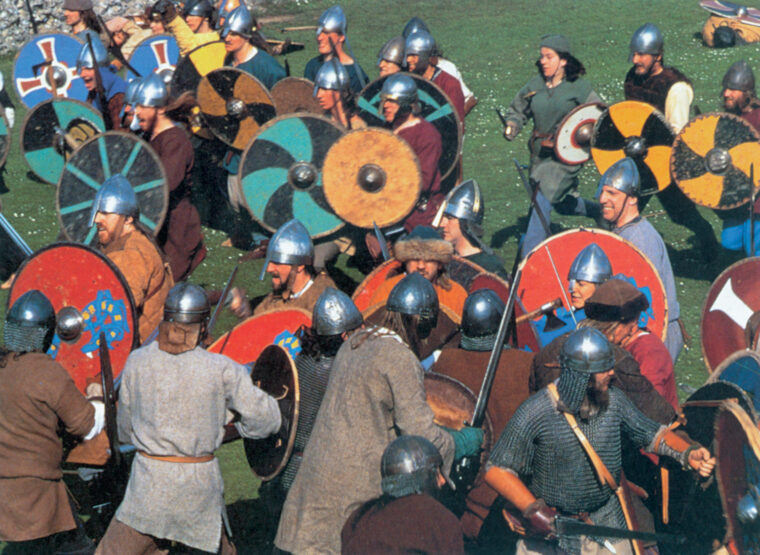
Anglo-Saxon
Viking Tide: Alfred the Great during the Danish Invasions
By Eric NiderostIt was the custom for King Alfred of Wessex to celebrate the Twelve Days of Christmas at his royal palace at Dorchester, in the county of Dorset. Read more

Anglo-Saxon
It was the custom for King Alfred of Wessex to celebrate the Twelve Days of Christmas at his royal palace at Dorchester, in the county of Dorset. Read more

Anglo-Saxon
For many history buffs, the date 1066 conjures up an image of Norman knights breaking through the shield wall of the ax-wielding Anglo-Saxons at Senlac Hill. Read more

Anglo-Saxon
When Maj. Gen. Curtis Lemay, the hard-driving commander of the Twentieth U.S. Air Force based in Guam, decided to change tactics in early 1945 to boost the effectiveness of the B-29 Superfortress, it was the Bell Aircraft plant in Marietta, Georgia, that ultimately provided him with the stripped-down bombers that played such a key role in ending the war in the Pacific. Read more

Anglo-Saxon
It can indeed be rather difficult to understand the differences between Anglo-Saxon thegns and the Norse Viking warriors. Read more

Anglo-Saxon
On December 25, 1065, King Edward the Confessor presided over a spectacular Christmas banquet at his palace on Thorney Island in the Thames River, just two miles upstream from London. Read more

Anglo-Saxon
“Never before has such a terror appeared in Britain as we have now suffered from a pagan race…The heathens poured out the blood of saints around the altar and trampled on the bodies of saints in the temple of God, like dung in the streets…Behold the church spattered with the blood of the priests of God,” wrote a Northumbrian scholar named Alcuin in the wake of the horrific Viking raid on the great monastery at Lindisfarne in Northumbria in the year 793. Read more